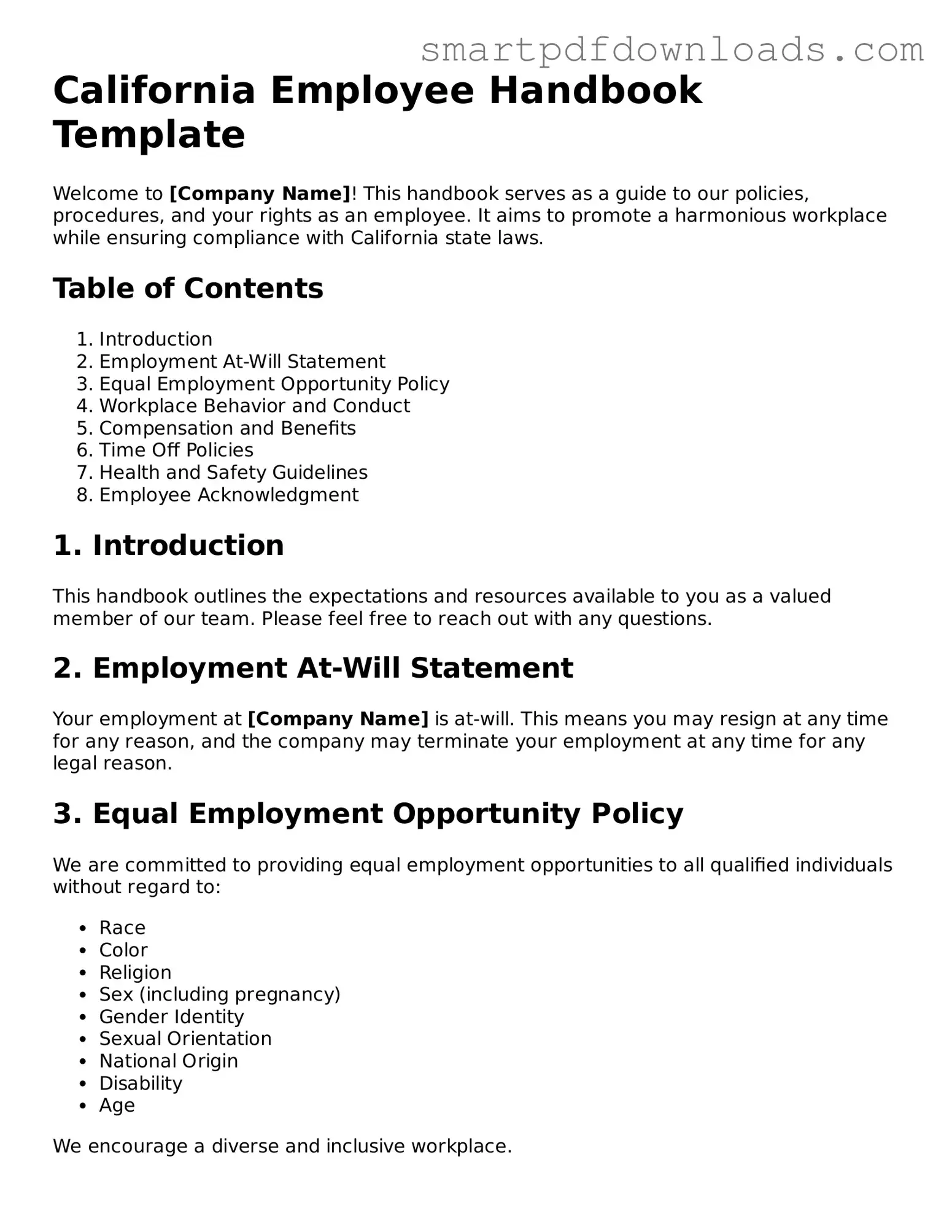California Employee Handbook Template
Welcome to [Company Name]! This handbook serves as a guide to our policies, procedures, and your rights as an employee. It aims to promote a harmonious workplace while ensuring compliance with California state laws.
Table of Contents
- Introduction
- Employment At-Will Statement
- Equal Employment Opportunity Policy
- Workplace Behavior and Conduct
- Compensation and Benefits
- Time Off Policies
- Health and Safety Guidelines
- Employee Acknowledgment
1. Introduction
This handbook outlines the expectations and resources available to you as a valued member of our team. Please feel free to reach out with any questions.
2. Employment At-Will Statement
Your employment at [Company Name] is at-will. This means you may resign at any time for any reason, and the company may terminate your employment at any time for any legal reason.
3. Equal Employment Opportunity Policy
We are committed to providing equal employment opportunities to all qualified individuals without regard to:
- Race
- Color
- Religion
- Sex (including pregnancy)
- Gender Identity
- Sexual Orientation
- National Origin
- Disability
- Age
We encourage a diverse and inclusive workplace.
4. Workplace Behavior and Conduct
Respectful behavior is essential. All employees are expected to:
- Communicate openly and respectfully.
- Handle conflicts in a constructive manner.
- Practice integrity in all work-related matters.
5. Compensation and Benefits
Employees at [Company Name] receive competitive compensation. Additional benefits may include:
- Health Insurance
- Paid Time Off
- Retirement Plans
6. Time Off Policies
Time off is important for everyone’s wellbeing. Here are a few of our time-off policies:
- Sick Leave
- Vacation Leave
- Holidays
7. Health and Safety Guidelines
Your health and safety are a priority. Follow these guidelines to maintain a safe work environment:
- Report any unsafe conditions immediately.
- Participate in safety training as required.
8. Employee Acknowledgment
By signing below, you acknowledge that you have received, read, and understood the policies outlined in this handbook.
Employee Name: __________________________
Signature: _______________________________
Date: ___________________________________
